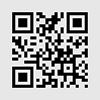
9
EUROLIGHT LC2412 User Manual
(42)
B
fader. This fader is the master control for the B MEMORY section;
it determines the maximum illumination level of all memories. Just like in
the case of the A fader, the FLASH keys can be utilized even when the fader is
at its zero position.
When the MAIN fader is raised up, both of these faders (A and B) can be used
to fade in and out between the settings of both of these sections.
(43)
MAIN
fader. It determines the maximum illumination level of all commands
at the console’s output.
(44)
PRESET FLASH
key. You can execute the entire A PRESET section with this
flash key, that is, activate the A PRESET section on the stage, even if the the
A fader
(41)
is fully down. As soon as you let go of the key, the lights fade
again. More information about this subject is found in chapter 4.3.
(45)
MEMORY FLASH
key. Has the same function for the B memory section.
Also, two additional keys in this section affect the entire console output:
(46)
HOLD
key. Freezes the current settings, while you select a new preset,
recall a different memory or implement an entirely different configuration.
This procedure is described in chapter 7.2.
(47)
BLACKOUT
switch. Completely dimms all lighting elements. This function
affects the entire console output, that is, it also affects the chases.
The dimming is done abruptly. If you want the dimming to take place softly,
use the MAIN fader. Console settings can be altered while the console output
is deactivated. To illuminate the stage again, hit the BLACKOUT key again.
The control LED dies out.
2.7 Control elements of the chase section
( 7 )
(50)
(48)
(49)
(51) (52)
(53) (54) (55)
Fig. 2.8: The chase section
(48)
NUMBER
key. Selects a chase, enabling you to show individual chases on
the control LEDs (automatic preview). The control LED of the NUMBER key
lights up, as long as chases are active in any form. This means, the LED lights
up even when the chase is not active, but just “dialed in”, ready for action.
When you select a chase whose steps have still not been programmed,
the LED dies out after letting go of the key. The LED also dies out when the
CHASE fader
(50)
is pulled down.
(49)
INSERT
key. Activating this key while a chase is running lets you alternate
between the current step and the one preceeding it by pressing the STEP
key
(53)
. This function can also be executed utilizig the X-FADE control
(MANUAL MODE key
(54)
activated). Additional information on this subject
can be found in chapter 6.2.6.
(50)
CHASE
fader. Controls the illumination level of a complete chase setup.
Separate ratios of a memory incorporating this chase remain intact.
(51)
X-FADE
control. Used to manually dissolve between individual chase steps.
Can also be used to dissolve between memories. Additionally, fade-in speed of
chase steps can be configured, provided this speed was not already determined
in theatre mode (only when theatre mode is active). More detailed information
on this subject can be found in chapters 6.2.3 and 7.4.
(52)
SPEED
fader. Controls chase speed.
(53)
STEP
key. Manually triggers chase steps. This can also be done while chases
are already active. This function can also be remotely controlled by using
a footswitch.
(54)
MANUAL MODE
key. Assigned to the X-FADE control. When the MANUAL MODE
key is activated, turning the X-FADE control back and forth either fades back
and forth between two chase steps (INSERT key activated) or fade chase steps
in after one another (INSERT key deactivated). A more detailed overview of the
various possibilities of fading in/out can be found in chapter 6.2.4.
(55)
SOUND/RUN MODE
key. Selectively activates chase control by means of bass
rythm (SOUND) or by means of the internal speed control (RUN).
2.8 Rear panel connectors of the LC2412
(56)
(57)
Fig. 2.9: Digital and analog outputs
(56)
DMX512 OUT
connector. The digital output of the LC2412 is provided by
means of a 5-pole XLR connector. You can connect a dimmer pack. It can
be used to process digital control commands according to the DMX512
control protocol.
(57)
ANALOG OUT
connector. The analog output is meant for controlling
via the analog standard (0 to +10 V DC) and is implemented as a Sub D
connector. Used to connect dimmer pack that don’t use the modern DMX512
control protocol.
(58)
(59)
(60) (61)
Fig. 2.10: Additional back-panel connectors
(58)
MIDI OUT
connector. MIDI data can be forwarded from the MIDI OUT
connector to a second LC2412 or another MIDI sequencer/PC by using a
corresponding cable (connect it to the MIDI IN connector on the receiving
unit). This lets you control two consoles in parallel, that is, a total of 156 DMX
channels are at your disposal.
(59)
MIDI IN
connector. Used to feed in MIDI data (e.g. from a MIDI sequencer or
another LC2412) to control the LC2412.
(60)
ANALOG IN
connector. Connect an output of your mixing console, your CD
player or another analog signal source to this 1/4" TS mono jack connector.
This lets you use the sound-to-light function and musical control of chases.
(61)
FOOTSWITCH
connector. Connect a footswitch here to remotely control
the STEP key. Additional information about this subject can be found in
chapter 6.2.4.
